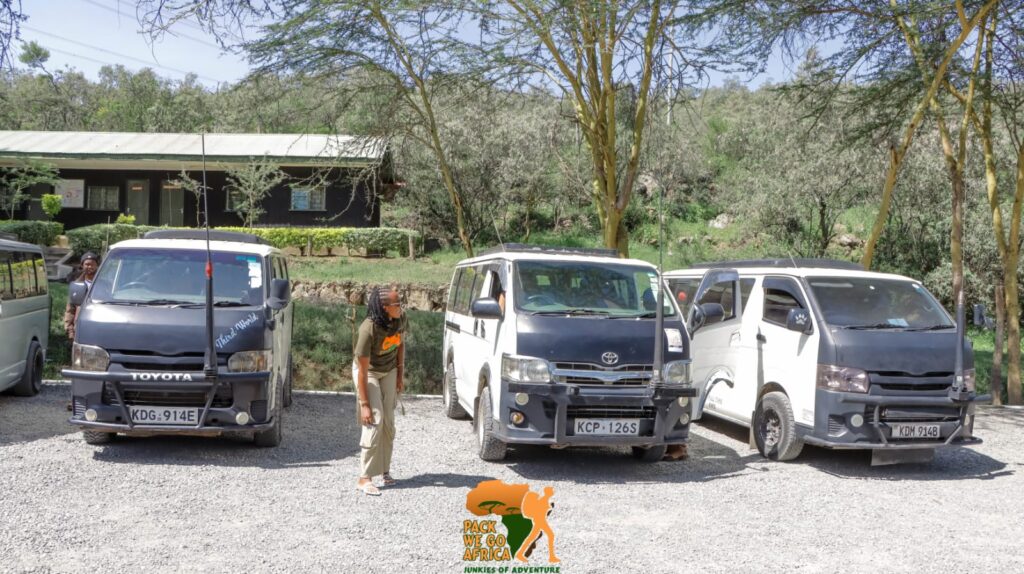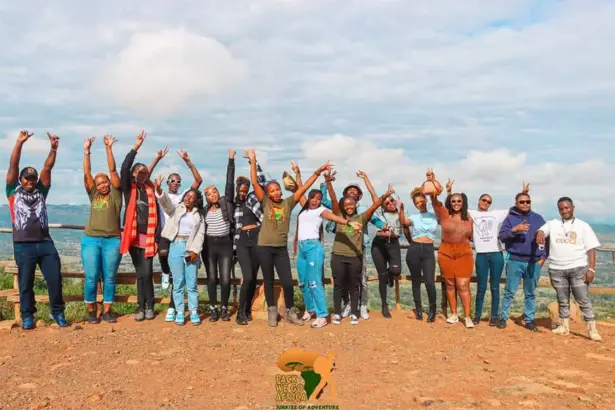Lake Nakuru National Park, located just 160KM from Nairobi, in Kenya’s Great Rift Valley, is a captivating destination for nature enthusiasts and wildlife lovers alike. The Lake Nakuru National park is renowned for its vibrant birdlife, especially the vast flocks of flamingos that often number in the millions, creating a stunning pink hue along the lake’s shores. Beyond flamingos, over 500 bird species, including pelicans, eagles, and storks, make this park a birdwatcher’s paradise.
The lake Nakuru park also serves as a sanctuary for endangered species such as the eastern black and southern white rhinos, offering visitors a rare opportunity to observe these majestic creatures in their natural habitat. Additionally, the park is home to a diverse array of wildlife, including Rothschild’s giraffes, lions, leopards, zebras, and hippos. Scenic viewpoints like Baboon Cliff provide panoramic vistas of the lake and surrounding landscapes, while attractions like Makalia Falls add to the park’s natural beauty. Whether you’re interested in birdwatching, game drives, or simply soaking in the breathtaking scenery, Lake Nakuru National Park offers a memorable experience for all visitors.
1. Mesmerizing Flamingo Spectacle

The lake Nakuru park’s most iconic attraction is its colossal flocks of flamingos—both greater and lesser species—which frequently number in the hundreds of thousands, turning the lake margin into a vast, shimmering pink carpet . These elegant birds feed on Spirulina algae, which thrives in the highly alkaline waters nourished by the Rift Valley’s mineral-rich soils .
- Best time to witness this phenomenon: Dry season months from July–October and January–March, when low water levels concentrate algae and flamingos .
- Even during off-peak months like April–June, migratory species and lush green sceneries offer rich birdwatching experiences .
2. A Sanctuary for Rhinos and Rare Wildlife

Declared a rhino sanctuary in 1987, Lake Nakuru National Park hosts a flourishing population of endangered black and white rhinos—over 25 black and around 70 white in 2009, backed by a protective electric fence to deter poachers . This makes it one of East Africa’s most successful conservation sites.
Beyond its rhino residents, the park offers sightings of Rothschild’s giraffes, brought in since 1977, along with buffalo, hyena, lion, leopard, zebra, warthog, waterbuck, hippo, and even big pythons inhabiting the dense woodlands
3. Breathtaking Lake Nakuru Landscapes & Panorama Points
For panoramic views, don’t miss viewpoints like Baboon Cliff, Lion Hill, and Out of Africa Ridge . Baboon Cliff, sitting atop rocky cliffs and clouded by euphorbia and acacia woodlands, rewards visitors with sweeping lake vistas along with cheeky troops of baboons.
Picture yourself enjoying a picnic at the cliff’s edge, surrounded by wildlife—the perfect blend of serenity and spectacle .
4. Hidden Gems: Makalia Falls & Flora Diversity
Tucked away on the southwestern edge, Makalia Falls offers a scenic break from game drives. Though modest at 10 m, the waterfall forms a serene, photogenic spot when seasonal rains feed its cascade
Nature lovers will appreciate the diverse vegetation—from Euphorbia candelabrum forests reaching up to 20 m, to drought-resistant grasslands and woodland strips—crucial for supporting both bird and herbivore populations
5. Safari Tips & Best Visiting Season

- Dry season (June–October & Jan–March): Optimal wildlife viewing with animals drawn to waterholes and shorter grass enhancing visibility (lakenakuru.org).
- Wet season (Apr–June, Nov–Dec): Fewer tourists, lush landscapes, thriving wildflowers and migratory birds—but expect occasional muddy roads
- Peak flamingo concentration: January–February—flamingo numbers swell with abundant food, but note increased crowding .
- Accessibility: Roughly 3 hours from Nairobi via good roads, with park gates at Lanet, Nderit, and the Main Gate. A nearby airstrip (Naishi) offers chartered flights .
Guided game drives or self-drives (4×4 preferred) are the best ways to explore; ranger-guided tours offer deeper insights and help sightings . Two full days are ideal—though a well-planned day trip covers the highlights.
Join us, Packwego Africa for budget friendly packages.
Contact us via
www.packwegoafrica.org/get-a-quote/





